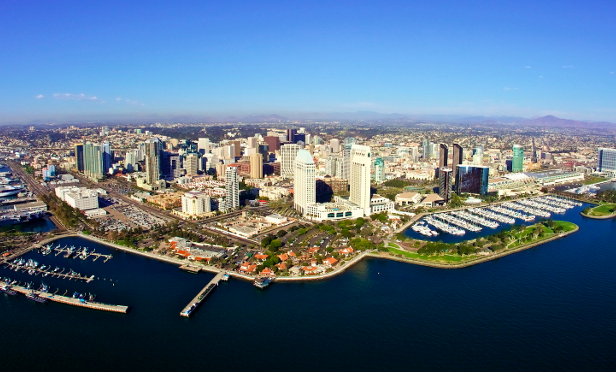There is a lot of focus on parking in Southern California today. With ride sharing, the growth of public transit and even the potential for autonomous vehicles in the future, developers are wondering if the current parking regulations are outdated. San Diego took a leap earlier this year and removed parking minimum requirements for new apartment projects near transit. The move was met with acclaim from developers. The issue came up at the CREW San Diego meeting last week—which included Betsy Brennan, CEO of Downtown San Diego Partnership; Stephanie Smith, managing attorney of Grid Legal; Elyse Lowe, director of development services at the City of San Diego; and Laura Black, deputy director of community planning & implementation at the City of San Diego—but there could still be challenges.
"The city passed reduced parking requirements for multifamily housing and transit areas earlier this year. It just got approved by coastal commission and is affective citywide. There is no mandating parking minimums," she said. The idea is to let the developer decide what parking is necessary; however, developers might not have that opportunity. "This could be a lending issue, though. Some lenders don't like a project that's not parked," added Black.
Recommended For You
Want to continue reading?
Become a Free ALM Digital Reader.
Once you are an ALM Digital Member, you’ll receive:
- Breaking commercial real estate news and analysis, on-site and via our newsletters and custom alerts
- Educational webcasts, white papers, and ebooks from industry thought leaders
- Critical coverage of the property casualty insurance and financial advisory markets on our other ALM sites, PropertyCasualty360 and ThinkAdvisor
Already have an account? Sign In Now
*May exclude premium content© 2025 ALM Global, LLC, All Rights Reserved. Request academic re-use from www.copyright.com. All other uses, submit a request to [email protected]. For more information visit Asset & Logo Licensing.









